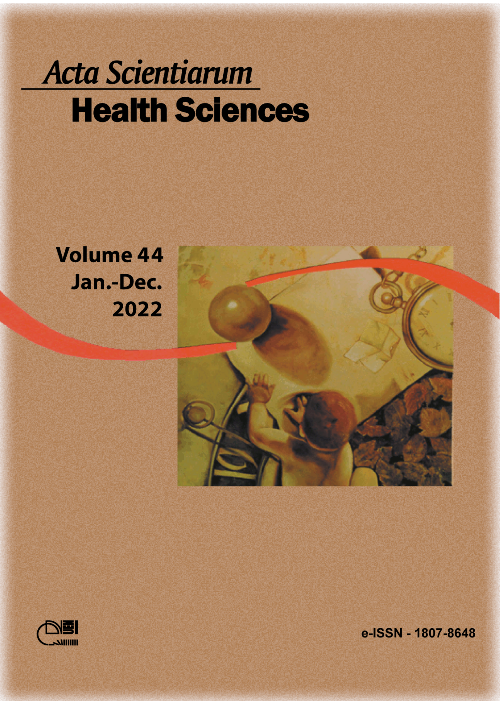Factors associated with urinary incontinence in volleyball athletes: a cross-sectional study
Abstract
The article has the purpose of identify the factors associated with the occurrence of urinary incontinence (UI) among volleyball athletes. This is a cross-sectional study conducted with female athletes of court volleyball. An interview was conducted to identify the factors associated with UI. The presence of urinary loss was identified using the Urinary Distress Inventory 6 (UDI-6). The associated factors found were divided into those related to sociodemographic (education and marital status), behavioral (constipation occurrence), obstetric (previous pregnancies), hereditary (skin color), and sports practice variables (sports level, volleyball position, time of sports practice in years, physical and tactical training routine, and daily water intake). The Chi-square test or Fisher's exact test, Mann-Whitney U test, and binary logistic regression model were used. This study included 83 volleyball athletes with a mean age of 26.6 (± 7.2) years. It was found that 25.3% of the volleyball athletes presented UI and those that reported symptoms of constipation were 10 times more likely to develop UI than those without constipation. Women who practice high-impact sports in a professional manner, such as volleyball, should be aware of the symptoms of pelvic floor dysfunction, since they will be predisposed to urine leakage. The finding that a considerable number of athletes report UI and that long-term sports practice exposes athletes to a higher risk of UI indicates that pelvic exercises should be proposed in order to reduce these symptoms.
Downloads
DECLARATION OF ORIGINALITY AND COPYRIGHTS
I Declare that current article is original and has not been submitted for publication, in part or in whole, to any other national or international journal.
The copyrights belong exclusively to the authors. Published content is licensed under Creative Commons Attribution 4.0 (CC BY 4.0) guidelines, which allows sharing (copy and distribution of the material in any medium or format) and adaptation (remix, transform, and build upon the material) for any purpose, even commercially, under the terms of attribution.
Read this link for further information on how to use CC BY 4.0 properly.























5.png)







